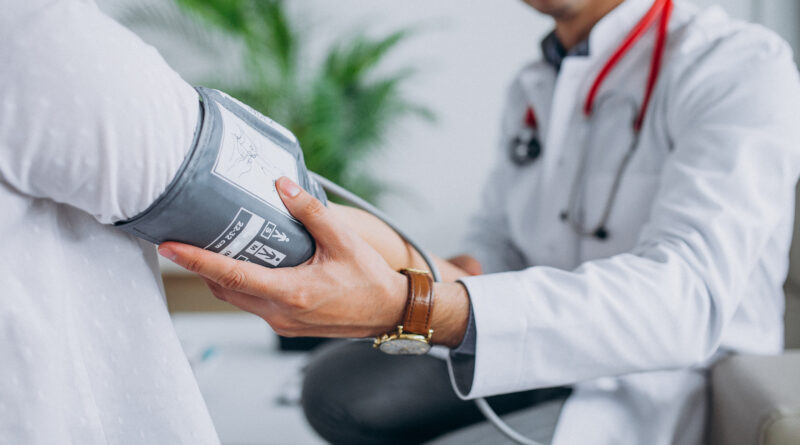Immediate Treatment for High Blood Pressure at Home : Effective Strategies for Managing Hypertension
Introduction
High blood pressure, also known as hypertension, is a prevalent condition that affects millions of people worldwide. If left uncontrolled, it can lead to serious health complications. While long-term management typically requires medical intervention, there are immediate measures you can take at home to help lower your blood pressure.
This article aims to provide you with a comprehensive guide on immediate treatments for high blood pressure, empowering you to take control of your health and reduce the risk of associated complications.

Image by senivpetro on Freepik
Adopt a Heart-Healthy Diet
The first step in managing high blood pressure at home is to make dietary changes that promote heart health. Emphasize the following:
a) Reduce sodium intake: Excessive salt consumption can contribute to elevated blood pressure. Limit your sodium intake to less than 2,300 milligrams per day.
b) Consume potassium-rich foods: Potassium helps counteract the effects of sodium on blood pressure. Include potassium-rich foods such as bananas, spinach, avocados, and sweet potatoes in your diet.
c) Increase fiber intake: A diet high in fiber aids in maintaining healthy blood pressure levels. Opt for whole grains, fruits, vegetables, and legumes to boost your fiber intake.
Engage in Regular Physical Activity
Physical activity plays a crucial role in managing high blood pressure. Incorporate the following into your routine:
a) Aerobic exercises: Engaging in moderate aerobic activities like brisk walking, cycling, swimming, or jogging for at least 150 minutes per week can help lower blood pressure.
b) Strength training: Including strength-training exercises, such as weightlifting or resistance training, two days a week, helps improve overall cardiovascular health.
c) Relaxation exercises: Practices like yoga, tai chi, and meditation can promote relaxation and reduce stress levels, ultimately contributing to blood pressure management.
Reduce Stress Levels
Chronic stress can significantly impact blood pressure. Employ these strategies to effectively manage stress:
a) Practice deep breathing: Deep breathing exercises can help activate the body’s relaxation response, reducing stress and lowering blood pressure.
b) Prioritize self-care: Engage in activities that bring you joy and relaxation, such as reading, listening to music, taking baths, or spending time with loved ones.
c) Seek support: Share your concerns with friends, family, or support groups. Sometimes, discussing your feelings can provide relief and help reduce stress levels.
Limit Alcohol Consumption and Quit Smoking
Excessive alcohol consumption and smoking are detrimental to blood pressure management. Limit alcohol intake to moderate levels (up to one drink per day for women and two drinks per day for men) and aim to quit smoking altogether. These lifestyle changes will significantly contribute to reducing your blood pressure.
Monitor Blood Pressure Regularly
Regular monitoring of your blood pressure at home allows you to stay aware of any fluctuations and make necessary adjustments to your treatment plan. Invest in a reliable home blood pressure monitor, follow the instructions carefully, and consult with your healthcare provider to ensure accuracy.
Conclusion
While immediate treatment for high blood pressure at home can help temporarily lower your blood pressure, it is crucial to consult with your healthcare provider for a comprehensive long-term management plan.
The strategies discussed in this article, such as adopting a heart-healthy diet, engaging in regular physical activity, reducing stress levels, limiting alcohol consumption, quitting smoking, and monitoring blood pressure, will empower you to take proactive steps toward managing your hypertension.
Remember, a holistic approach combining lifestyle changes, medication (if prescribed), and regular medical check-ups is key to maintaining optimal blood pressure levels and safeguarding your overall well-being.




